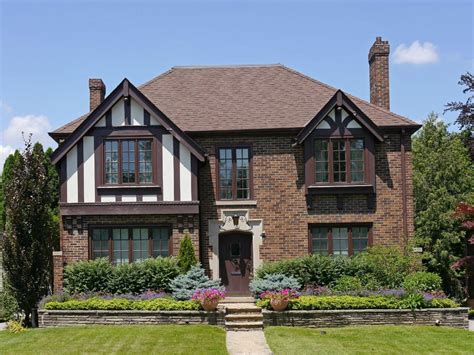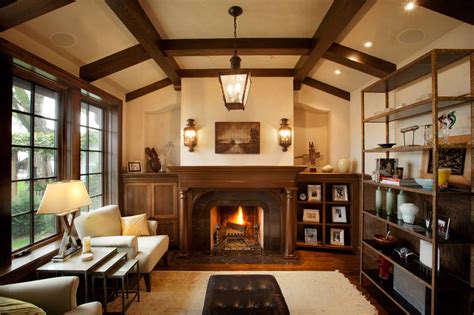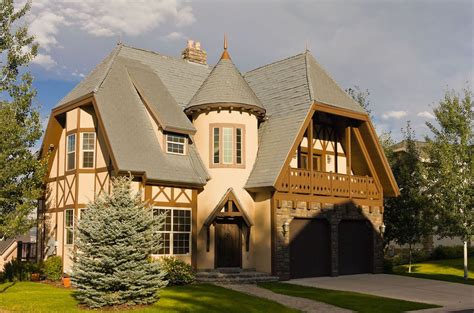a tudor style | what is tudor style home a tudor style The Tudor architectural style is the final development of medieval architecture in England and Wales, during the Tudor period (1485–1603) and even beyond, and also the tentative introduction of Renaissance architecture to Britain. It followed the Late Gothic Perpendicular style and, gradually, it evolved into an aesthetic more consistent with trends already in motion on the continent, evidenced by . $7,900.00
0 · what is tudor style home
1 · tudor style interior
2 · tudor style house characteristics
3 · tudor style home description
4 · tudor style exterior
5 · tudor interior design characteristics
6 · traditional tudor style homes
7 · pictures of tudor style houses
The price for a 1970s cartier tank watch starts at $823 and tops out at $19,800 with these watches, on average, selling for $2,948.
What is a Tudor-style house? Known for pitched gable roofs, decorative wood trim, and old-world appeal, this architectural style was once a lot more common.The Tudor architectural style is the final development of medieval architecture in England and Wales, during the Tudor period (1485–1603) and even beyond, and also the tentative introduction of Renaissance architecture to Britain. It followed the Late Gothic Perpendicular style and, gradually, it evolved into an aesthetic more consistent with trends already in motion on the continent, evidenced by .Tudor style, type of British architecture, mainly domestic, that grafted Renaissance decorative elements onto the Perpendicular Gothic style between 1485 and 1558. Tudor Home Roof Style. With an asymmetrical design, the roof usually has very prominent gable ends and builders often embellished those sections with applied half timbers. Along with the steeper pitch, a Tudor .
Tudor style houses, also called Tudor Revival or Mock Tudor, are two-to-three-story homes with brick exteriors featuring large portions of white stucco and decorative half .
Key aspects of the Tudor period that shaped this architectural style: Defining Characteristics of Tudor Homes. Exposed Timber Framing. Steep Gabled Roofs and Tall Chimneys. Leaded . The Tudor-style elements include its striking black-and-white timbered façade, tall chimneys, and arched doorways. The interior of the building also features Tudor elements, . Tudor architecture originated in England and Wales during the Tudor period of 1485 to 1603. Tudor-style homes feature half-timbered frames that contrast their white stucco exterior, making them easy to identify. The .
Sure, a Tudor-style house is easily recognizable, but what exactly makes a Tudor a Tudor? Interior designer Steven Gambrel weighs in on the architectural tenants of Tudor-style .
The Origins of Tudor Architecture. Tudor Period Houses originated in England between the late 15th and early 17th centuries, marking a shift from medieval Gothic structures to more personal, home-oriented spaces. A few things shaped this architectural transition: Key aspects of the Tudor period that shaped this architectural style:Tudor-style homes had their heyday from about 1485 to 1603, during the Tudor period in England. Interestingly, their popularity experienced a revival in the United States and other parts of the world during the early 20th century, particularly between the 1890s and 1940s. This revival, often referred to as Tudor Revival or Mock Tudor, breathed . The original English Tudor started in England during the 15 th century when the British monarchs were reigning in the country. The original English Tudor house was built for the wealthy but it wasn’t until a few decades later that the commoners adopted a more modest version of Tudor architecture. The same building technique, i.e. the half-timbers, were visible . Anthony Masterson. The facade of a Tudor-style home is often dominated by one or more prominent, steeply pitched cross gables. This home features two front gables and brick wall cladding.Brick became the preferred wall surface for even the most modest Tudor cottages after masonry veneering was popularized in the 1920s. The arches surrounding the portico .
Tudor style houses usually had casement windows grouped in rows of three or more framed in either wood or metal. Double-hung windows were less common. Windows were often divided into six or eight panes and were sometimes made up of rectangles and other times arranged in a diamond pattern. Windows were usually placed symmetrically in the main gable.Characteristics of Tudor Style Houses. Tudor Homes Today: A Guide for Architecture Enthusiasts. 1. Steep Gable Roofs. One of the most visually striking features of Tudor architecture is the steeply pitched gable roof, which is both functional and aesthetically appealing.. Functionality: Steep roofs prevent water buildup by allowing rain and snow to slide off easily, a necessity in . Tudor-Style Home Interiors. Catherine McQueen // Getty Images. A knock against Tudor-style homes is often that they can be gloomy inside because of their heavy exterior masonry cladding and wood timbers. “I think people assume that they’re dark inside, which is an unfair characteristic, having lived in one myself,” Murphy says. . Tudor is an architectural style that was prevalent in England and Wales during the latter part of the Middle Ages, beginning in the late 15th century and extending post medieval times into the .
History of the Tudor Revival. Tudor Revival made its debut in the United States around 1890 as a romanticized tribute to England’s Tudor period of the 1500s. During the early years, prior to 1915, the style utilized stone with Flemish gables (had more than one curve and a pediment on top) and Renaissance facade ornaments.
what is tudor style home
tudor style interior


Defining Qualities of Tudor Style Architecture. Hallmarks of these houses include steeply pitched gable roofs, brick exteriors, hand-hewn half-timbering, masonry and stonework, and leaded glass windows. ELLE Decor A-List designer Steven Gambrel says that for Tudor-style homes, an unparalleled level of quality is the name of the game. From the .
Tudor architecture is a style of building that started in England and Wales from 1485 to 1603. It blends elements from the Renaissance with the older Perpendicular Gothic look. You'll know Tudor homes by their half-timbered frames, which show wood on the outside and are filled in with white stucco.
Tudor-style home exteriors can be adorned with narrow, gabled, or oriel windows, giving them an old-world charm many find irresistible. Characteristics of Tudor Houses. Tudor houses, renowned for their half-timbered construction, are a harmonious blend of natural materials and structural durability. This technique uses a wooden frame for the .
Tudor homes look like something straight out of a fairytale, with a charming style that takes its cues from medieval English architecture.Their distinctive wood-faced facades and white-stuccoed walls were popular with well-to-do homeowners from the the mid-19th century until World War II; since Tudors were built with expensive materials like timber and stone, with .
The Elizabethan period transitioned from the earlier Tudor style to the more intricate and decorative Elizabethan Tudor. Buildings from this era often feature highly ornate detailing, including strapwork, heraldic motifs, and classical elements. One remarkable example is the Burghley House in Lincolnshire, a magnificent example of Elizabethan . What is a Tudor-style house? Known for pitched gable roofs, decorative wood trim, and old-world appeal, this architectural style was once a lot more common. Tudor architecture refers partly to the architectural style that emerged between 1485 and 1603 when artisans built sophisticated two-toned manor homes combining Renaissance and Gothic design elements.The Tudor architectural style is the final development of medieval architecture in England and Wales, during the Tudor period (1485–1603) and even beyond, and also the tentative introduction of Renaissance architecture to Britain.
Tudor style, type of British architecture, mainly domestic, that grafted Renaissance decorative elements onto the Perpendicular Gothic style between 1485 and 1558. Tudor Home Roof Style. With an asymmetrical design, the roof usually has very prominent gable ends and builders often embellished those sections with applied half timbers. Along with the steeper pitch, a Tudor Revival’s roofline was often accentuated with dormers or overlapping sections. It was a complex form to build, and expensive to sheath .
Tudor style houses, also called Tudor Revival or Mock Tudor, are two-to-three-story homes with brick exteriors featuring large portions of white stucco and decorative half-timbering. These homes have a romantic and slight medieval appearance, making them a truly unique home style.Key aspects of the Tudor period that shaped this architectural style: Defining Characteristics of Tudor Homes. Exposed Timber Framing. Steep Gabled Roofs and Tall Chimneys. Leaded Windows and Stone Mullions. Ornate Doorways and Arched Entries. Practical Tips for Designing a Tudor-Style Home. Exterior Design Choices. Interior Decor Elements. The Tudor-style elements include its striking black-and-white timbered façade, tall chimneys, and arched doorways. The interior of the building also features Tudor elements, such as a large fireplace and carved wooden beams.
Tudor architecture originated in England and Wales during the Tudor period of 1485 to 1603. Tudor-style homes feature half-timbered frames that contrast their white stucco exterior, making them easy to identify. The Tudor architectural style made its .

tudor style house characteristics
tudor style home description
Quietly assertive without any of the flashy in-your-face approach of some other Rolex sports watches, the Explorer 1016 may have been positioned as a watch to scale mountains, but it’s a great everyday Rolex watch to .
a tudor style|what is tudor style home

























